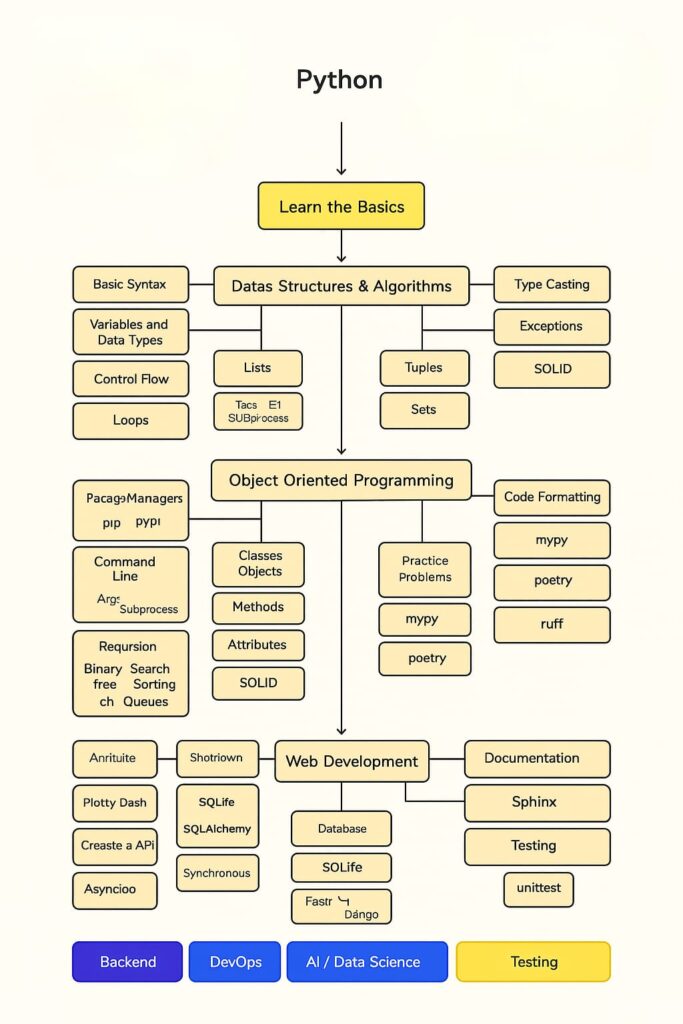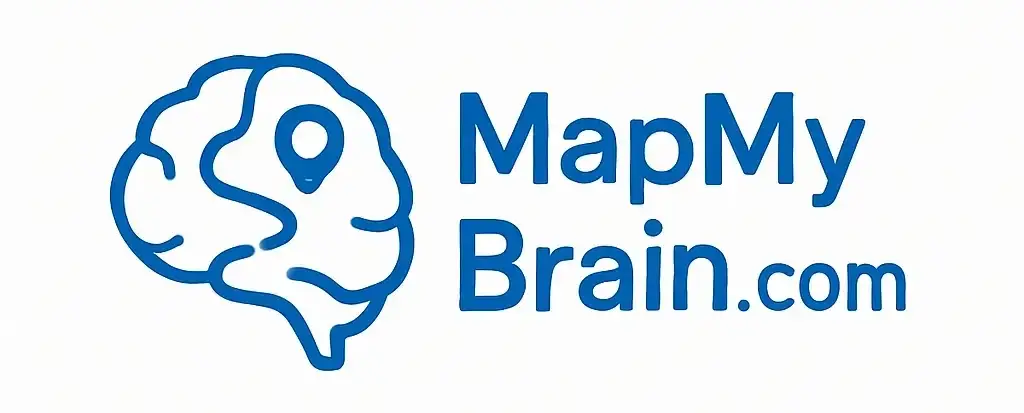Python Language Roadmap: From Basics to Advanced
Introduction
Learning the Python language is one of the best choices for beginners and experienced developers alike. Known for its simplicity and versatility, Python is used in web development, data science, automation, AI, and more. If you’re ready to start your journey, this roadmap will guide you step by step—from the fundamentals to advanced topics—so you can learn effectively and confidently.
[The Resources are provided at the end of the page]

🧱 1. Understand the Basics of Python Language
Start by learning the core syntax and structure of Python.
Focus on:
- Variables and data types
- Basic operators
- Input/output
- Conditional statements (
if,else,elif) - Loops (
for,while)
These are the building blocks of the Python language, and every project will rely on them.
🧮 2. Learn Data Structures in Python
Next, focus on Python’s powerful built-in data structures:
- Lists
- Tuples
- Sets
- Dictionaries
Understand how to store, access, and manipulate data efficiently. Mastering these will make your Python language skills much more practical.
🧰 3. Functions and Modules
Functions help make your code reusable and organized.
You’ll learn:
- Writing and calling functions
- Function arguments and return values
- Lambda functions
- Importing and using modules
Knowing how to structure code in functions and use Python’s standard modules is key to writing clean, scalable programs.
🗂️ 4. Object-Oriented Programming (OOP)
Python supports OOP principles, which are essential for building real-world applications.
- Classes and objects
- Inheritance and polymorphism
- Encapsulation and abstraction
OOP is a core concept in advanced Python language applications like frameworks and large-scale systems.
🧪 5. File Handling and Error Handling
Learn how to read from and write to files using Python.
Also, handle exceptions gracefully to avoid program crashes.
- Working with text and CSV files
- Try, except, finally blocks
- Custom exceptions
These topics make your code more robust and professional.
🧪 6. Mastering Python Libraries and Frameworks
Once your fundamentals are strong, start exploring the powerful libraries the Python language offers:
- For Web Development: Flask, Django
- For Data Science: NumPy, Pandas, Matplotlib
- For Machine Learning: scikit-learn, TensorFlow
- For Automation: Selenium, BeautifulSoup
Choose your path based on your career goals and specialize accordingly.
🧠 7. Work on Projects and Real-World Applications
Apply what you’ve learned through hands-on projects:
- Build a calculator, to-do app, or personal website
- Analyze real datasets with Pandas
- Create automation scripts for daily tasks
Projects are the best way to reinforce your Python language knowledge and build a portfolio.
🧑💻 8. Explore Advanced Topics
Once you’re confident with the basics and intermediate level, explore:
- Decorators and generators
- Multithreading and multiprocessing
- Working with APIs
- Unit testing with
unittestorpytest - Design patterns
These advanced concepts will prepare you for professional development work.
🔄 9. Practice with Challenges and Contribute to Open Source
Sharpen your problem-solving skills by:
- Practicing on platforms like LeetCode, HackerRank, or Codewars
- Reading other people’s code
- Contributing to GitHub projects
This will help you apply your Python language skills in different contexts and gain real-world experience.
✅ Conclusion
The Python language is vast but extremely beginner-friendly. Following this roadmap will guide you through the right learning path—starting from core concepts and leading up to advanced development. Whether your goal is to build web apps, analyze data, or automate tasks, Python has something for everyone.
Start slow, build consistently, and let your coding journey grow with each step!
Resources:
YouTube Channels:
English language- https://shorturl.at/sjw7s (Click on the names to visit the YouTube video)
Telugu Language-https://shorturl.at/f08xU
Hindi Language- https://shorturl.at/hW2XM
Websites to Learn:
2. Code Academy
